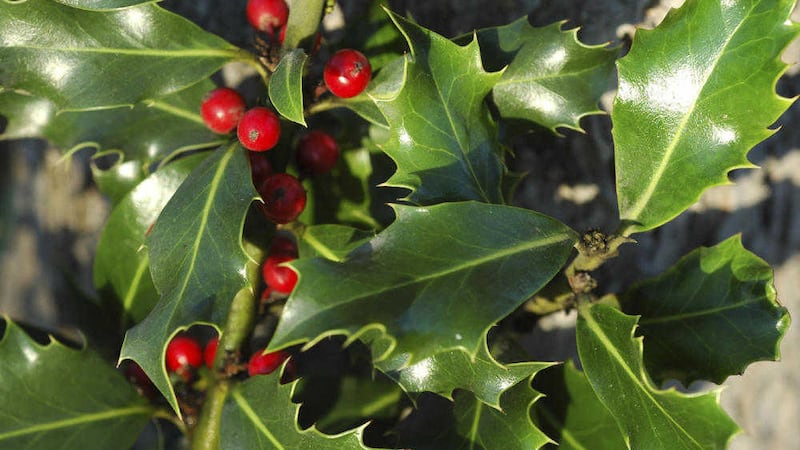I IMAGINE few readers will be surprised to hear that I don't get too excited by Christmas.
I'm neither a practising Christian or an unapologetic consumerist, so really there's not a lot for me to get worked up about.
Nevertheless, I do believe that the turning of the year at the winter solstice is worth celebrating, though in a manner that's rather more tasteful than a flashing snowman on a gable end.
Accordingly, I gravitate towards those seasonal decorations that reflect nature's resilience, namely the traditional Yuletide evergreens of holly and ivy.
Fresh from the garden garlanding the mantle piece or on top of a picture frame may appear somewhat understated in an era of LEDs and inflatable Santas but perhaps that’s the point. Not only are they more authentic but they're cheaper and more sustainable too.
The Christmas carol The Holly and the Ivy dates from the early 19th century, and reflects how these two evergreens have long been adopted as Christmas symbols and decorations.
Their use predates Christianity, with Celtic pagan druids regarding holly – or An Cuileann, as Gaeilge – as sacred, while it was also associated with the Roman festival of Saturnalia. Ivy was similarly treasured, though perhaps because it’s more common and much more vigorous it was never bestowed with the same mysticism as holly.
Apart from their kinship as yuletide partners, the two plants share few characteristics, though a key similarity is their wildlife friendliness, especially as shelter for birds in winter.
The prickled leaves of the native holly – Ilex aquifolium – mean it is sometimes employed as hedging plant that deters both man and beast.
However, it is much slower growing than many traditional hedge plants.
It’s worth noting that with holly the foliage on the lower branches – those that can be reached by grazing animals – boast many prickles, yet higher up, where the leaves need less protection, the spines are fewer.
For me, the native species looks best for decoration, whether on its own or on a wreath, but then other spine-free varieties are easier to work with.
Hollies are either male or female, with only the latter producing the prized red berries.
For a named berrying female to bear fruit there must be a nearby (100-200m) male tree to pollinate it.
Ilex x altaclerensis 'Camelliifolia' offers pleasure without pain – it has flat rounded foliage without spines.
Bearing not dissimilar virtually prickle-free leaves is Ilex Aquifolium 'JC Van Tol’ which, while slow growing, has the advantage of a being a self-fertile female.
Ilex x koehneana 'Chestnut Leaf' has leaves that crimped along the edge – like a chestnut leaf, no less.
Ivy is more common than holly and often the places where the native species (Hedera Hibernica) flourishes are neglected – meaning it’s often classed as a weed.
It is not, as many people think, a parasite and doesn't draw strength from the host tree.
It can, however, overwhelm the crown of tree, which over time will kill it. It can also be a nuisance when it attaches itself to stone or brick work.
Ivy will grow in any soil and thrives in shade, although the variegated types need more sun and tend not to be a vigorous.
Good additions to the garden include Hedera helix 'Goldheart', with dark green leaves that have a butter yellow centre.
It is slow to establish but then grows rapidly, though is unsuitable as for ground cover.
Hedera 'Dentata', more commonly known as Elephant’s ears, is a vigorous plant that is suitable or growing against a wall or as ground cover.








